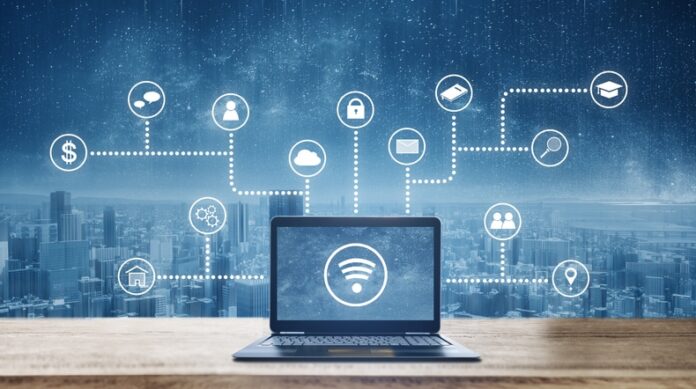Network and application infrastructures have undergone significant modifications due to modern technology and the growing use of hosted services. While these improvements have given users more capabilities than ever before, they have also increased our need for a well-functioning network to keep these vital apps running.
As a result, it can be even more damaging and difficult to fix when a network problem arises. Knowing which network problems can have the most considerable impact on your network, know more about by visiting routerlogin.one. On the other hand, it can assist you in learning how to identify network difficulties quickly.
What are Networking Issues?
Network problem symptoms include stuttering video calls, slow application or network speed, buffering downloads, choppy VoIP quality, and no Internet connection. There’s a significant probability your network is to blame if you’re having trouble performing basic Internet operations or using critical apps. VoIP calls, ERP programs, file downloads, and other services are all affected by network issues. You’re most certainly dealing with a network problem if a faulty network connection prohibits you from accessing things outside your computer.
Specific network issues are caused by defective hardware, such as routers, switches, firewalls, and unusual usage patterns, such as network bandwidth surges, app configuration changes, or security breaches. Network issues are inconvenient, and if they aren’t addressed, they can severely affect your company’s network. That’s why it’s critical to know what may go wrong with your network and constantly monitor network performance to swiftly discover and resolve network issues before they affect your end customers.
Usage of a Large Bandwidth
The maximum quantity of data transmitted via an Internet connection in a given amount of time is known as bandwidth. It refers to a network’s ability to move data quickly between devices or the Internet. Bandwidth is frequently confused with Internet speed. However, it relates to the quantity of data yielded across a relation in a given period (calculated in megabits per second) (Mbps). Higher bandwidth allows data to move faster across your network and simultaneously supports a more significant number of connected devices. When someone or something on your web, such as a vast application, monopolizes your bandwidth by downloading gigabytes of data, it causes congestion. High bandwidth utilization can generate network congestion, leaving insufficient bandwidth for those areas of your network that require it. When this happens, you may have issues with your Internet connection, such as poor download speeds.
Excessive CPU usage
CPU is the part of a PC that acquires and processes instructions for managing systems and applications. With so much responsibility on its shoulders, high CPU utilization on a network device is a very concerning symptom. As your network devices work harder to fulfill an increasing number of functions, something is going wrong. When your network becomes clogged by massive traffic, the most common cause of high CPU consumption is. When processes take longer to complete or when a more significant number of network packets are delivered and received over your network, CPU consumption might skyrocket. Many network equipment, such as switches, feature hardware components (ASICs or NPUs) that take charge and process packets exceptionally quickly. The CPU consumption for this equipment is unrelated to the amount of traffic.
It’s different for equipment that analyses or manipulates traffic, such as firewalls. The CPU may be in the critical route of packet routing or forwarding, depending on the capabilities you’ve enabled on your devices. Network metrics such as latency, jitter, and packet loss will grow if abused, resulting in severe network performance degradation. At times, it can be questioned to get the correct information regarding actual CPU usage. Several monitoring tools, such as those included in the equipment’s GUI or a monitoring tool that has been improperly configured, can report an average value based on the utilization of 8 cores or over excessively long periods, such as every 5, 15, or 60 minutes.
Issues with Physical Connectivity
Although it may appear obvious, some network issues can arise from hardware not connected to the network. When it comes to troubleshooting network issues, our natural impulse is to consider the most complicated scenarios, even when the problem is often straightforward and correct in front of us. Hardware issues, such as faulty cables or connectors, might cause issues with the network equipment to which it is linked. You may believe the problem is caused by a network failure or an issue with your Internet connection, but it’s caused by a broken or malfunctioning cable.
This can happen outside of the LAN infrastructure as well. If a copper or fiber-optic cable is damaged, the amount of data that can pass through it without packet loss is likely reduced. It might be tedious to check each cable one by one, and it can eat up a lot of your time. A network performance monitoring software that measures failures on all network interfaces and alerts you if any problems develop is a simple approach to monitoring cables on a broken connector.
Devices or equipment that isn’t working properly
Network difficulties can occur in network equipment or devices such as firewalls, routers, switches, and wireless access points. Bad setups, defective network connection issues, packet loss, or simply being disabled can all cause problems. For your network to function successfully, you must verify that all of its devices are configured appropriately. When you install or reconfigure a machine on your network or upgrade equipment firmware, you must test it to ensure it is installed properly. Numerous network performance difficulties are caused by device misconfigurations, which can influence various portions of your network and eventually cause serious issues. You need to keep an eye on all of your network’s switches and devices to make sure they’re always functioning correctly and react promptly if they aren’t.
DNS Errors
The Domain Name System, or DNS, controls how people discover your website on the Internet. It’s essentially a directory that connects domain names with IP addresses for the Internet (and any Internet-connected device). Every website on the Internet has its IP address, and computers can use their IP address to attach to additional computers via the Internet to scrutinize web pages. When you type a domain name into your browser, DNS searches for information related to that domain.
Conclusion
Numerous network issues could take over your network at any time. Network difficulties can be more annoying than ever before, given current network infrastructures’ increasing complexity and magnitude.







